If you were watching Ohio Valley radar yesterday afternoon, you might have noticed radar returns in southern Indiana. Were these showers and storms bubbling up due to temperatures rising through the 70s? Did I bust a forecast?
Despite what you may think, the same device that suggests I blew the forecast also suggests I got it right. Modern radar is a power thing when used to it’s fullest potential.
First, is it realistic to have radar returns in this area? A visible satellite snapshot of the Ohio Valley shows cumulus clouds in southern Indiana at 5:15pm yesterday afternoon:
We need clouds to have showers and storms, so the returns on radar could be precipitation. Notice there are no towering clouds in the area though (unlike in northern Ohio were showers and storms were in progress with higher instability); satellite imagery leads us to believe there was just a sea of shallow cumulus clouds yesterday afternoon in southern Indiana.
Here are the radar returns as viewed by the National Weather Service Doppler radar in Indianapolis late yesterday afternoon. The reflectivity (commonly shown on television or apps) is on the left, and correlation coefficient (showing the relationship between the height and width of objects like raindrops, hail, or debris sampled by radar) at the right. Blue values of correlation coefficient here suggest these returns are particles of different shapes and sizes and likely not raindrops, hailstones, or something related to meteorology:
Radar cross sections show these returns did not extend well into the atmosphere. Here’s the reflectivity cross section from NWS’ Indianapolis’ radar at 5pm ET yesterday:
These returns are relatively close to the ground (below 10,000′). Here’s the correlation coefficient cross section at the same time:
Blue values here suggest these radar returns are likely not raindrops or hailstones. So what could it be?
The radar returns become apparent around 4:40pm in the afternoon. See the green dot in the reflectivity at the left with blue (low) correlation values in the same area at the right:
This is surprisingly close to Camp Atterbury in Indiana. The military is known for dropping chaff to scramble radar and serve as a countermeasure. Low (blue) correlation coefficient values on radar are common with smoke plumes and military chaff. The meteorological environment did not support showers and storms, so military chaff is the most likely bet.
Need some additional evidence? Fast forward to this morning. Here’s the visible satellite snapshot as of 8:45am Wednesday:
Notice no clouds in the sky. There were still no clouds over southern Indiana as of 10:30am ET.
Yet there is something on radar in the same area near Camp Atterbury as of 10:20am ET:
Reflectivity values are high and correlation coefficient values are low in the image attached. It looks like chaff is the culprit here. Remember, we need clouds to have showers and storms, and there were no clouds in the sky when these returns were on radar.
Radar is a powerful tool if you review the data thoroughly. Even as a meteorologist, it’s easy to fall into the trap of seeing radar returns and assuming showers and storms are developing. Radar can sample dirt, bugs, plumes from wildfires, tornado debris and precipitation. Things aren’t always as they seem!

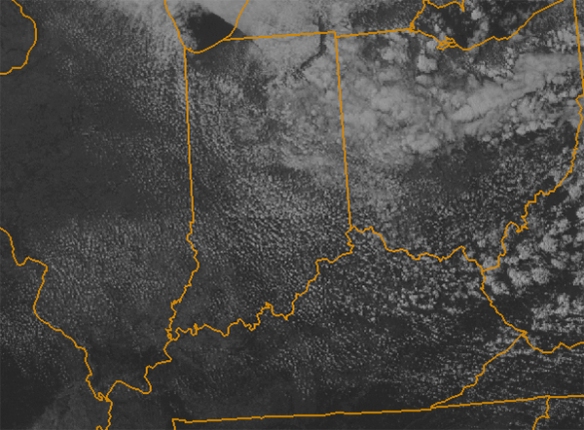
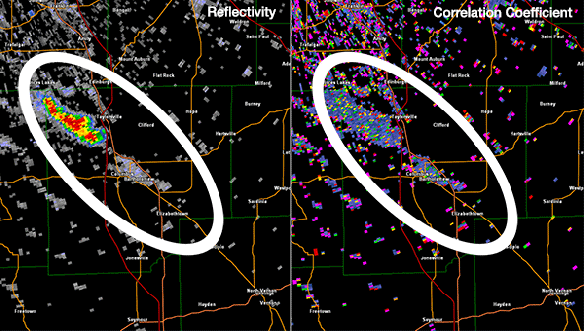
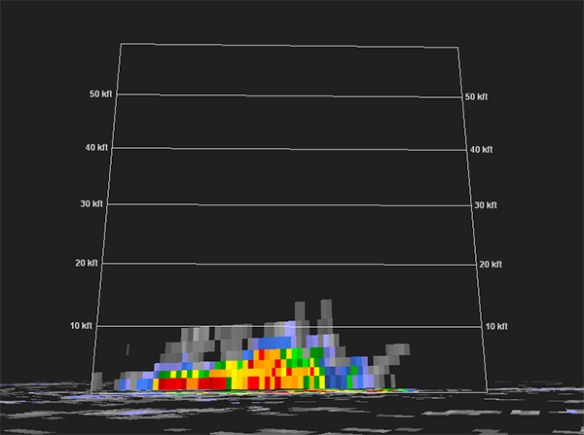
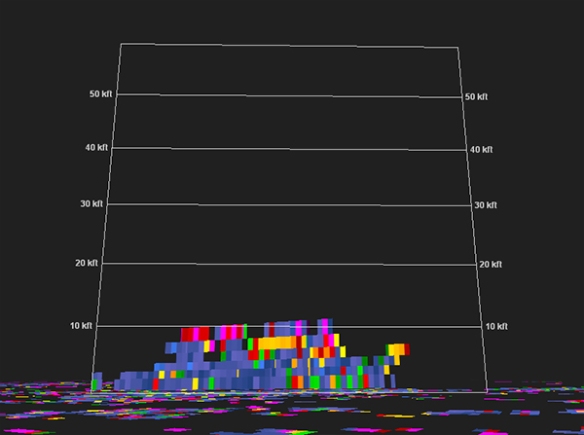
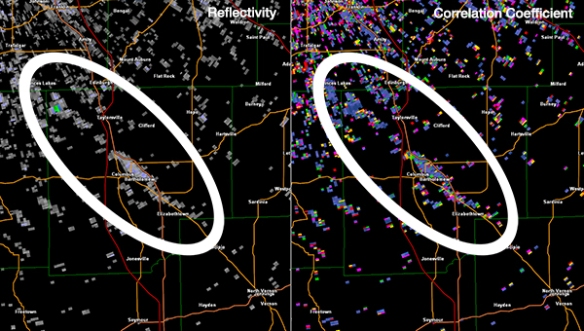
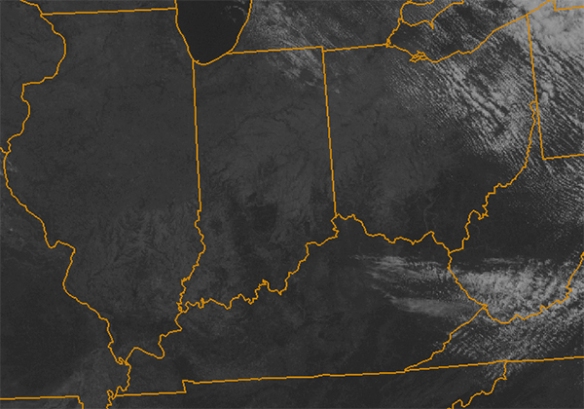
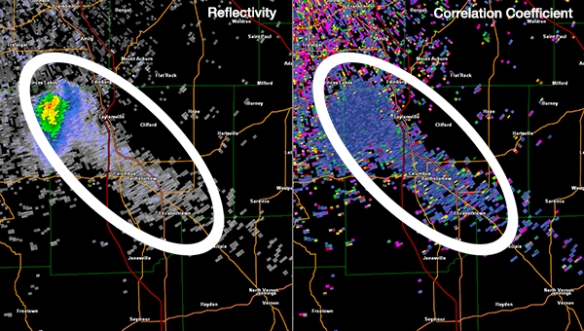
That is an very large area you just described on Channel 12 Weather at 4PM for Military chaff. I did a partial mileage figure at 50 miles long by 25 miles wide. That is a very very large area to be just considered chaff. I am thinking it is something else besides just chaff. This is also happening nationwide with Military exercises all over. Utah and Arizona weatherman were discussing this yesterday. New form of Technology they are using an what are they really trying to hide?
a friend just told me that this was developed by Hedy Lamarr and husband: At the beginning of World War II, Lamarr and composer George Antheil developed a radio guidance system for Allied torpedoes, which used spread spectrum and frequency hopping technology to defeat the threat of jamming by the Axis powers.[6] Though the US Navy did not adopt the technology until the 1960s, the principles of their work are now incorporated into modern Wi-Fi, CDMA and Bluetooth technology,[7][8][9] and this work led to their being inducted into the National Inventors Hall of Fame in 2014
I thought Camp Atterbury was no longer being used as a military complex. I was under the impression that it was being used for civilian use now.